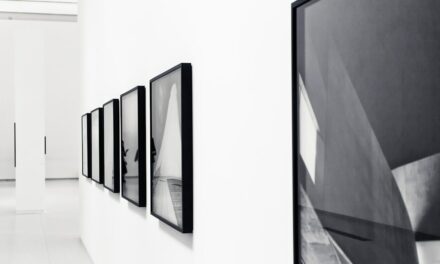Postmodern art emerged as a significant movement in the latter half of the 20th century, challenging the conventions and ideologies that had dominated the art world for centuries. It arose as a reaction against the principles of modernism, which emphasised originality, progress, and the notion of a universal truth. In contrast, postmodern art embraces plurality, fragmentation, and the idea that meaning is subjective and constructed rather than inherent.
This shift in perspective has led to a diverse array of artistic expressions that reflect the complexities of contemporary life, often blurring the boundaries between high and low culture, art and everyday life. The roots of postmodern art can be traced back to various cultural, social, and political changes that characterised the late 20th century. The rise of globalisation, advancements in technology, and the questioning of established narratives all contributed to a fertile ground for new artistic explorations.
Artists began to experiment with different mediums and techniques, often incorporating elements from popular culture, historical references, and personal experiences. This eclectic approach not only redefined what art could be but also opened up new avenues for dialogue about identity, representation, and the role of the artist in society.
Summary
- Postmodern art challenges traditional artistic norms and embraces a diverse range of styles and techniques.
- Critics argue that postmodern art lacks depth and meaning, and is often seen as a rejection of artistic skill and craftsmanship.
- Appropriation is a key feature of postmodern art, involving the use of existing images and objects to create new works with different meanings.
- Irony is a common theme in postmodern art, often used to critique societal norms and challenge the viewer’s perceptions.
- Postmodern art often reflects and comments on consumer culture, using imagery and techniques from advertising and mass media.
- Postmodern art can be a powerful tool for political commentary and activism, addressing issues such as power dynamics and social justice.
- Technology plays a significant role in postmodern art, with artists using digital tools and multimedia to create innovative and interactive works.
- Postmodern art has had a profound impact on the art world, challenging traditional boundaries and opening up new possibilities for artistic expression.
Critiques of Postmodern Art
Despite its innovative spirit, postmodern art has faced considerable criticism from various quarters. Detractors argue that its emphasis on pastiche and appropriation leads to a lack of originality and authenticity. Critics contend that by recycling existing images and ideas, postmodern artists risk diluting the power of art to convey meaningful messages or provoke genuine emotional responses.
This perspective posits that the relentless deconstruction of established narratives can result in a nihilistic outlook, where nothing holds intrinsic value or significance. Moreover, some critics assert that postmodern art can be overly cerebral, prioritising intellectual engagement over emotional resonance. This critique suggests that the complexity of postmodern works may alienate audiences who seek a more direct connection with art.
In this view, the focus on irony and self-referentiality can create a barrier between the artwork and its viewers, leading to a sense of detachment rather than engagement. As a result, the question arises: does postmodern art risk becoming an insular discourse that fails to resonate with broader societal concerns?
Appropriation in Postmodern Art
One of the defining characteristics of postmodern art is its use of appropriation—the practice of borrowing elements from existing works or cultural artifacts to create something new. This technique has been employed by numerous artists to challenge notions of authorship and originality while also critiquing the commodification of culture. By recontextualising familiar images or symbols, artists can highlight the ways in which meaning is constructed and manipulated within society.
This practice not only raises questions about ownership but also invites viewers to reconsider their own interpretations of familiar cultural references. Prominent examples of appropriation in postmodern art include the works of artists such as Andy Warhol and Sherrie Levine.
Similarly, Levine’s rephotographed images challenge traditional notions of authorship by presenting existing works as her own, prompting discussions about the nature of creativity in a world saturated with visual information. Through appropriation, postmodern artists engage in a dialogue about cultural production, questioning who gets to define meaning in an increasingly interconnected world.
Irony in Postmodern Art
Irony is another hallmark of postmodern art, serving as a tool for artists to critique societal norms and conventions. This ironic stance often manifests in works that juxtapose disparate elements or employ humour to subvert expectations. By embracing irony, postmodern artists can address serious themes while simultaneously inviting viewers to question their assumptions about art and culture.
This duality allows for a more nuanced exploration of complex issues, as irony can both reveal and obscure meaning.
Koons’ sculptures often play with kitsch and consumerism, presenting banal objects in a manner that elevates them to high art while simultaneously critiquing their commodification.
Kruger’s text-based works employ bold graphics and provocative statements to challenge societal norms surrounding gender and power dynamics. Through irony, these artists create layers of meaning that encourage viewers to engage critically with their work, fostering a deeper understanding of the cultural landscape in which they operate.
Postmodern Art and Consumer Culture
The relationship between postmodern art and consumer culture is intricate and multifaceted. As consumerism became increasingly pervasive in the late 20th century, artists began to reflect on its impact on identity, values, and social structures. Postmodern art often critiques the commodification of culture by highlighting the ways in which consumer goods shape our perceptions of self and society.
This exploration can take many forms, from direct commentary on advertising practices to more subtle examinations of how consumer culture influences artistic production itself. Artists such as Damien Hirst and Takashi Murakami exemplify this intersection between art and consumerism. Hirst’s works often incorporate elements of luxury and excess, prompting viewers to consider the relationship between art and market value.
Murakami’s vibrant creations blur the lines between fine art and commercial products, drawing on Japanese pop culture to explore themes of consumption and desire. By engaging with consumer culture, postmodern artists not only critique its excesses but also reflect on their own roles within this complex system.
Postmodern Art and Politics
Postmodern art is inherently political, as it often seeks to challenge dominant narratives and power structures within society. Artists utilise their work as a platform for social commentary, addressing issues such as race, gender, class, and identity. By subverting traditional artistic conventions and embracing diverse perspectives, postmodern artists can illuminate the complexities of contemporary life while advocating for social change.
The works of artists like Ai Weiwei and Kara Walker exemplify this political engagement within postmodern art. Ai Weiwei’s installations often confront issues related to human rights and freedom of expression, using his platform to raise awareness about social injustices. Walker’s provocative silhouettes explore themes of race and history, challenging viewers to confront uncomfortable truths about America’s past.
Through their work, these artists demonstrate how postmodern art can serve as a powerful vehicle for political discourse, encouraging audiences to reflect on their own roles within societal structures.
Postmodern Art and Technology
The advent of technology has profoundly influenced postmodern art, shaping both its production and reception. As digital media became increasingly integrated into everyday life, artists began to explore new possibilities for creative expression through technology. This shift has led to innovative practices that challenge traditional notions of authorship, representation, and audience engagement.
Digital art forms such as video installations, interactive media, and virtual reality have emerged as significant components of postmodern artistic practice. Artists like Pipilotti Rist and Rafael Lozano-Hemmer utilise technology to create immersive experiences that invite viewers to engage with their work in dynamic ways. These technological advancements not only expand the boundaries of artistic expression but also reflect the complexities of contemporary existence in an increasingly digital world.
As technology continues to evolve, so too will the ways in which artists respond to its implications for society.
The Impact of Postmodern Art
The impact of postmodern art on contemporary culture cannot be overstated. By challenging established norms and embracing diverse perspectives, postmodern artists have reshaped our understanding of what art can be and how it functions within society. Their explorations of appropriation, irony, consumer culture, politics, and technology have opened up new avenues for dialogue about identity, representation, and meaning in an increasingly complex world.
As we continue to navigate the intricacies of contemporary life, the lessons gleaned from postmodern art remain relevant. The movement encourages us to question our assumptions about creativity, authorship, and cultural production while fostering a deeper understanding of the forces that shape our experiences. Ultimately, postmodern art serves as a mirror reflecting the complexities of our time—a testament to the power of artistic expression in an ever-evolving landscape.
Postmodern Art: Critiques, Appropriations, and Irony explores the complexities of contemporary art movements. For those interested in exploring different art techniques, an article on Pointillism provides a detailed introduction to this unique style. Additionally, artists looking to enhance their oil painting skills can benefit from reading about using solvents and mediums safely in oil painting. Understanding the emotional impact of art is also crucial, as discussed in the article on art and emotion. These resources offer valuable insights for artists and art enthusiasts alike.



